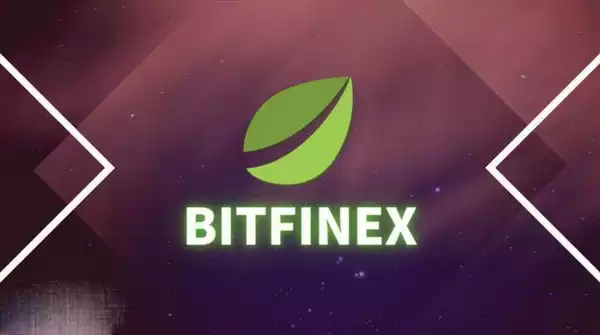-
 bitcoin
bitcoin $110918.433029 USD
-1.69% -
 ethereum
ethereum $3996.872473 USD
-2.43% -
 tether
tether $1.000594 USD
0.00% -
 bnb
bnb $1178.871834 USD
-2.38% -
 xrp
xrp $2.413973 USD
-3.47% -
 solana
solana $194.341461 USD
-4.24% -
 usd-coin
usd-coin $0.999963 USD
-0.03% -
 tron
tron $0.320092 USD
0.92% -
 dogecoin
dogecoin $0.196919 USD
-3.42% -
 cardano
cardano $0.669585 USD
-3.63% -
 hyperliquid
hyperliquid $37.485952 USD
-3.58% -
 ethena-usde
ethena-usde $1.000026 USD
-0.02% -
 chainlink
chainlink $18.018220 USD
-5.13% -
 bitcoin-cash
bitcoin-cash $523.879267 USD
-2.41% -
 stellar
stellar $0.324655 USD
-3.67%
Bitfinex contract trading secrets
Understanding the intricacies of Bitfinex's contract trading environment, including contract types, leverage, margin funding, is crucial for successful trading.
Nov 07, 2024 at 01:46 pm

Unveiling the Secrets to Successful Contract Trading on Bitfinex
Bitfinex, renowned for its extensive cryptocurrency offerings and advanced trading platform, presents a unique opportunity for traders to capitalize on the lucrative world of contract trading. However, navigating this complex landscape requires a deep understanding of the platform's intricacies and effective trading strategies. This comprehensive guide delves into the secrets of contract trading on Bitfinex, empowering traders with the knowledge and techniques to maximize their returns.
Step 1: Understanding Bitfinex's Contract Trading Environment
Before embarking on contract trading, it's essential to familiarize yourself with Bitfinex's trading platform and the specific characteristics of its contracts.
- Types of Contracts: Bitfinex offers a wide range of perpetual futures contracts, including BTC, ETH, EOS, and a diverse selection of altcoins. Each contract represents a specific underlying asset and has its own unique specifications, such as contract size, leverage, and trading hours.
- Leverage and Margin: Contract trading on Bitfinex allows traders to amplify their potential returns by utilizing leverage. However, leverage also magnifies potential losses. Traders must carefully manage their margin and risk exposure to avoid liquidation.
- Margin Funding: Bitfinex provides a margin funding system that enables traders to lend or borrow funds to other users, earning interest on their holdings while providing liquidity to the market.
Step 2: Developing a Trading Strategy
Successful contract trading requires a well-defined trading strategy that aligns with your risk tolerance, time horizon, and market analysis.
- Trend Analysis: Technical analysis techniques help identify market trends and potential trading opportunities. By studying historical price data, traders can determine whether an asset is likely to continue in its current trend or reverse direction.
- Market Indicators: Various technical indicators, such as moving averages, RSI, and Bollinger Bands, provide insights into market momentum, overbought/oversold conditions, and potential trading ranges.
- Risk Management: Risk management is paramount in contract trading. Traders should determine their acceptable risk level and implement stop-loss and take-profit orders to minimize potential losses.
Step 3: Executing Trades on Bitfinex
Once you have developed a trading strategy, it's time to execute your trades on Bitfinex's platform.
- Placing Orders: Bitfinex offers several order types, including market orders, limit orders, and stop orders. Understanding the nuances of each order type is crucial for effective trade execution.
- Market Depth: The market depth widget provides a real-time view of the order book, showing the number of buy and sell orders at different price levels. This information helps traders assess market liquidity and potential price movements.
- Trading Fees: Bitfinex charges fees on both maker and taker trades. Understanding the fee structure and incorporating it into your trading strategy is essential to maximize profitability.
Step 4: Monitoring and Managing Positions
Constant monitoring and management of open positions are crucial for successful contract trading.
- Position Dashboard: Bitfinex's position dashboard provides traders with real-time information about their open positions, including profit/loss, margin utilization, and liquidation price.
- Trailing Stop Orders: Trailing stop orders allow traders to automatically adjust their stop-loss orders as the market moves in a favorable direction, locking in profits and limiting losses.
- Margin Adjustments: As market conditions fluctuate, traders may need to adjust their margin levels to maintain their positions. Bitfinex offers various margin funding options to help traders manage their risk.
Step 5: Advanced Trading Techniques
Seasoned traders often employ advanced techniques to enhance their returns and mitigate risks.
- Arbitrage: Arbitrage involves simultaneously buying an asset on one exchange and selling it on another exchange at a higher price, capitalizing on price differences between exchanges.
- Scalping: Scalping involves making small, frequent profits by trading in and out of a position quickly, benefiting from short-term price fluctuations.
- Hedging: Hedging involves using opposing positions in different markets or assets to reduce the overall risk exposure of a portfolio.
Step 6: Education and Continuous Learning
The cryptocurrency market is constantly evolving, and successful traders continually adapt their knowledge and skills.
- Bitfinex University: Bitfinex University provides educational resources, webinars, and tutorials, covering various aspects of contract trading and cryptocurrencies.
- Community Forums: Participating in online forums and joining trading communities allows traders to exchange ideas, learn from others, and stay updated with market developments.
- Market News and Analysis: Staying abreast of market news and analysis helps traders make informed decisions and anticipate potential market movements.
Disclaimer:info@kdj.com
The information provided is not trading advice. kdj.com does not assume any responsibility for any investments made based on the information provided in this article. Cryptocurrencies are highly volatile and it is highly recommended that you invest with caution after thorough research!
If you believe that the content used on this website infringes your copyright, please contact us immediately (info@kdj.com) and we will delete it promptly.
- Cryptos in Flux: MoonBull's Lunar Stampede, Solana's Struggle, and XRP's ETF Hopes
- 2025-10-17 06:25:11
- Remittix Presale, RTX Token, and DeepSnitch AI: The Next Big Thing in Crypto?
- 2025-10-17 07:25:17
- Bitcoin, Trump & Meme Coins: Newsmax's Bold Move & AlphaPepe's Rise
- 2025-10-17 07:25:17
- SEI Forms Inverse Head & Shoulders: Breakout Imminent?
- 2025-10-17 07:10:01
- Cardone Capital Dives Deeper: Why Grant Cardone is Buying More Bitcoin Now
- 2025-10-17 06:25:11
- Newsmax, Bitcoin, and Trump Coin: A Bold Crypto Play?
- 2025-10-17 07:10:01
Related knowledge

Practical parameter settings for a Bitcoin multi-timeframe moving average system
Sep 18,2025 at 10:54pm
Optimizing Timeframe Combinations for Bitcoin Trading1. Selecting appropriate timeframes is crucial when building a multi-timeframe moving average sys...

How can I filter out false breakouts in Dogecoin high-frequency trading?
Sep 22,2025 at 01:00am
Understanding False Breakouts in Dogecoin Trading1. A false breakout occurs when Dogecoin's price appears to move beyond a defined support or resistan...

Techniques for identifying tops and bottoms in the Bitcoin on-chain NVT model
Sep 20,2025 at 07:54pm
Understanding the NVT Model in Bitcoin Analysis1. The Network Value to Transactions (NVT) ratio is often described as the 'P/E ratio' of the cryptocur...

What does the surge in open interest in Bitcoincoin futures mean?
Sep 20,2025 at 11:18pm
Understanding the Surge in Dogecoin Futures Open Interest1. A surge in open interest within Dogecoin futures indicates a growing number of active cont...

How can I use the Ethereum USDT premium to gauge market sentiment?
Sep 18,2025 at 11:55pm
Understanding the Ethereum USDT Premium1. The Ethereum USDT premium refers to the price difference between USDT (Tether) traded on Ethereum-based plat...

What should I do if Ethereum staking yields decline?
Sep 20,2025 at 06:18am
Understanding the Causes Behind Declining Ethereum Staking Yields1. The Ethereum network transitioned to a proof-of-stake consensus mechanism with the...

Practical parameter settings for a Bitcoin multi-timeframe moving average system
Sep 18,2025 at 10:54pm
Optimizing Timeframe Combinations for Bitcoin Trading1. Selecting appropriate timeframes is crucial when building a multi-timeframe moving average sys...

How can I filter out false breakouts in Dogecoin high-frequency trading?
Sep 22,2025 at 01:00am
Understanding False Breakouts in Dogecoin Trading1. A false breakout occurs when Dogecoin's price appears to move beyond a defined support or resistan...

Techniques for identifying tops and bottoms in the Bitcoin on-chain NVT model
Sep 20,2025 at 07:54pm
Understanding the NVT Model in Bitcoin Analysis1. The Network Value to Transactions (NVT) ratio is often described as the 'P/E ratio' of the cryptocur...

What does the surge in open interest in Bitcoincoin futures mean?
Sep 20,2025 at 11:18pm
Understanding the Surge in Dogecoin Futures Open Interest1. A surge in open interest within Dogecoin futures indicates a growing number of active cont...

How can I use the Ethereum USDT premium to gauge market sentiment?
Sep 18,2025 at 11:55pm
Understanding the Ethereum USDT Premium1. The Ethereum USDT premium refers to the price difference between USDT (Tether) traded on Ethereum-based plat...

What should I do if Ethereum staking yields decline?
Sep 20,2025 at 06:18am
Understanding the Causes Behind Declining Ethereum Staking Yields1. The Ethereum network transitioned to a proof-of-stake consensus mechanism with the...
See all articles










































































